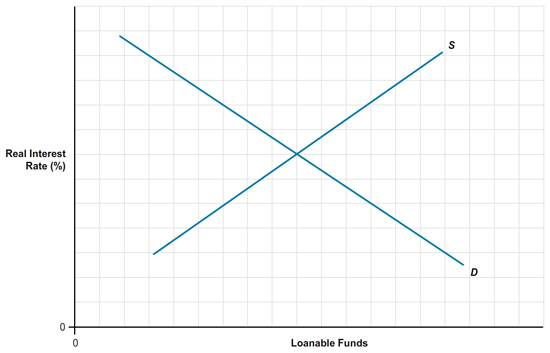Solved Problems
Chapter 11a (22a)
TABLE OF CONTENTS
Question 1 of 4
Step 1
Solved Problems
true
true
You must read each slide, and complete any questions on the slide, in sequence.
Consider a country’s market for loanable funds depicted below. The supply of loanable funds (S) and demand for loanable funds (D) are given in the graph.

If workers fear that unemployment will increase, then the loanable funds most likely , and the equilibrium interest rate .
People represent savers, or the supply of loanable funds. More uncertainty means more saving for the future, and less spending in case they lose their jobs. This a rightward shift in the supply curve, which as always results in a lower price of loanable funds or lower interest rate on the vertical axis.
3
Step 2

If people’s wealth increases, then the loanable funds most likely , and the equilibrium interest rate .
People represent savers, or the supply of loanable funds. More wealth means more current consumption, and less saving. This a leftward shift in the supply curve, which as always results in a higher price of loanable funds or higher interest rate on the vertical axis.
3
Step 3

If the country’s level of productivity increases, then the loanable funds most likely , and the equilibrium interest rate .
Productivity is a feature of firms, which demand loanable funds. More productivity increases the likelihood that businesses will invest in profitable activities, shifting the demand curve right. This results in a higher price of loanable funds or higher interest rate on the vertical axis.
3
Step 4

If businesses become more confident in the future, then the loanable funds most likely , and the equilibrium interest rate .
Businesses which demand loanable funds, will take out more loans based on expected future projects, shifting investment demand right and raising the interest rate.
3